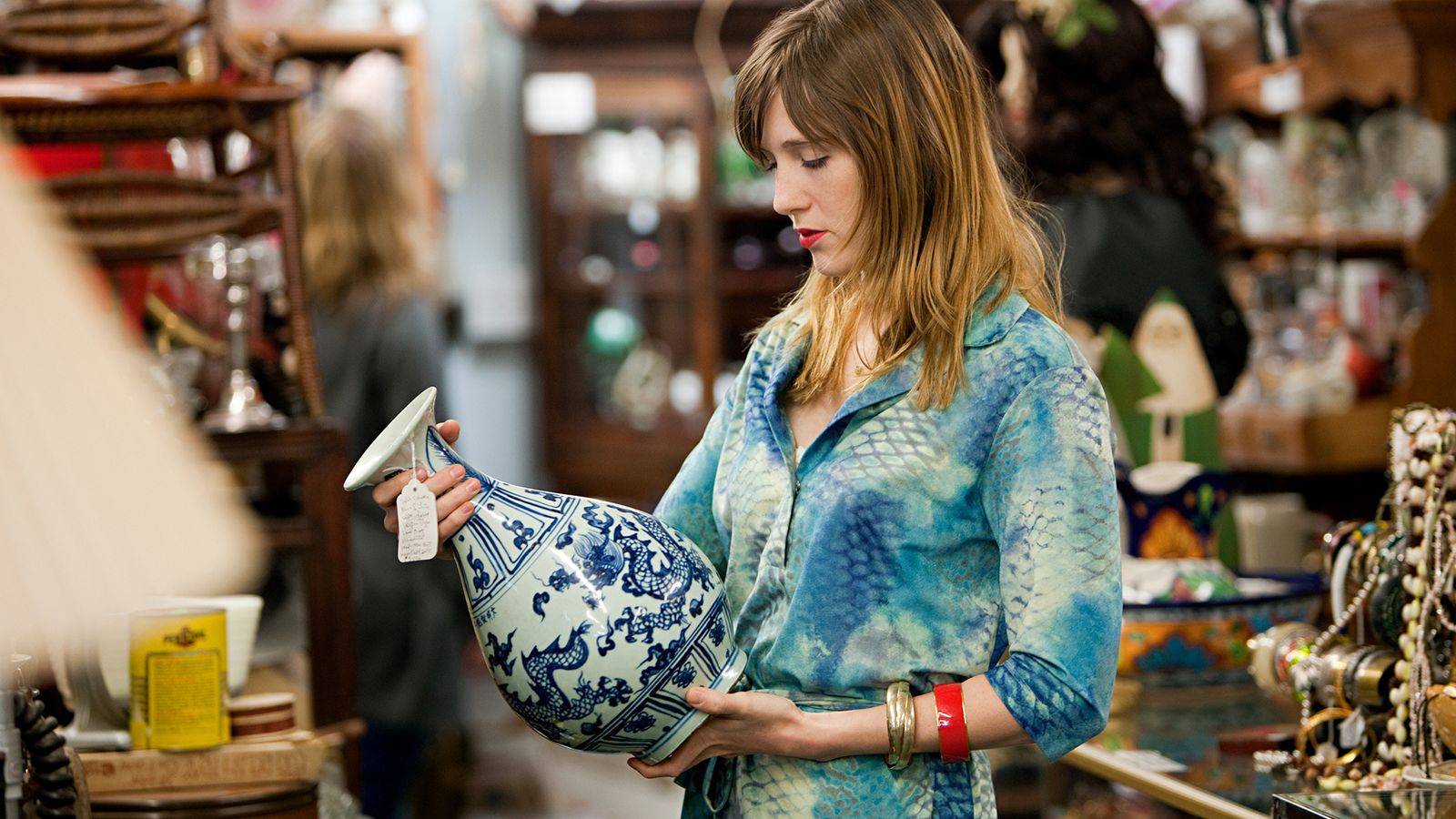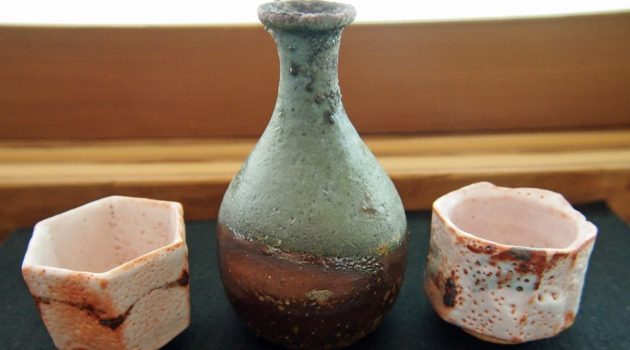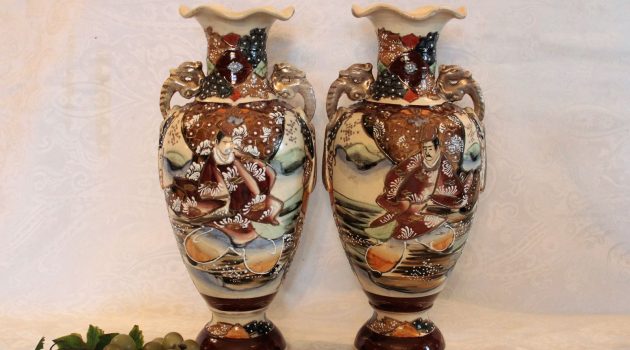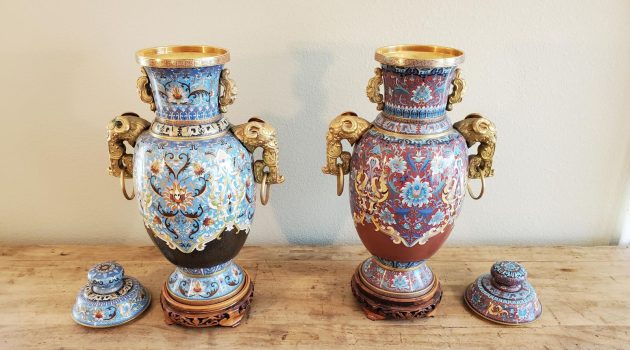Antique vases are treasured for their historical value, beauty, and craftsmanship. Spotting an authentic antique vase can be a rewarding challenge for collectors and enthusiasts alike.
When faced with an array of vases, knowing what to look for can be the difference between finding a genuine antique and an imitation.
The first step in identifying an antique vase is to observe its material and craftsmanship.
Whether made of glass, porcelain, or another material, antiques typically show signs of age, such as wear patterns or patina that cannot be replicated by modern manufacturing processes.
In assessing a vase’s age and authenticity, certain marks or features can be indicative of its origins.
Check for maker’s marks, which can often be found on the bottom of the vase, and look for signs of hand-craftsmanship, such as irregularities in the glaze or indications of being hand-blown, which often suggest an earlier creation date.
Research is key; understanding the distinct styles and characteristics of different periods will serve as a guide.
Additionally, the overall condition of the vase plays a significant role in determining its value, with well-preserved pieces usually commanding higher prices.
Key Takeaways
- Understanding materials and craftsmanship can indicate a vase’s authenticity.
- Maker’s marks and hand-crafted features are crucial details in verifying age.
- Vase condition significantly impacts its value to collectors.
1. Understanding Antique Vases
Navigating the world of antique vases requires an eye for detail and a respect for the rich historical tapestry they represent.
Here you’ll learn how to recognize genuine antique vases by examining their identifying features, appreciating their cultural significance, understanding materials, and noting any maker’s marks or unique aspects that contribute to their age and rarity.
Identifying Characteristics
When you’re examining a vase to determine if it’s an antique, pay special attention to its design elements.
Art Nouveau vases often have organic, flowing lines, while Victorian vases may feature ornate decorations with sentimental motifs.
Carnival glass vases are known for their iridescent finish, and genuine pieces reflect the art and manufacturing styles of their respective time periods.
History and Culture Influence
Antique vases are not merely containers; they are historical artifacts.
For instance, Chinese porcelain vases often tell the tales of dynastic changes, especially those from the Ming Dynasty, which are highly treasured.
Delving into their background can give you insight into the era they were made, reflecting the art and culture of that time.
Materials and Composition
The material of a vase offers clues to its authenticity and age. Porcelain is a fine, white ceramic, often used in Chinese antiques.
Glass vases may vary in texture and thickness, with older ones tending to have imperfections from manufacturing methods of the past.
Ceramics can include a range of clay-based materials, often covered with a distinctive glaze that can indicate a specific historical period.
Marks and Signatures
Flip your vase gently and examine the bottom for marks or signatures. Authentic pieces might bear a stamp, hallmark, or artist’s signature.
These identifiers are crucial in verifying the vase’s origin, manufacturer, and sometimes even the exact year of production.
Age and Rarity
Age is a defining factor of an antique vase; typically, items over 100 years old fall into this category. Rarity adds value to a vase, with rare pieces often being one-of-a-kind or from a limited production run.
Look for unique aspects of the paint, glaze, or construction methods that are less common in today’s market.
Remember, the nuances of each vase’s story are revealed through its craftsmanship and history, so handle these treasures with care and curiosity.
2. Assessing Authenticity and Value
When trying to determine the genuine nature and worth of an antique vase, it’s vital to consider several pivotal factors.
Authenticity is often verified through expert analysis, meticulous examination of the item’s condition, and the provenance detailing its history.
Expert Appraisal
An expert appraisal is indispensable if you’re serious about confirming the authenticity of your antique vase. Appraisers are skilled in identifying key signatures or marks that establish the vase’s origin.
These professionals can also discern the subtleties between genuine antiques and clever reproductions.
- Look for: Certifications or credentials of the appraiser.
- Enquire about: Their experience with similar antiques.
Condition and Imperfections
The condition of an antique vase greatly affects its value. Inspect your vase carefully for any signs of wear or damage, as these can either signify age or raise concerns about its legitimacy.
Provenance and Documentation
Provenance, or the documented history of your vase, is crucial in confirming its authenticity and subsequently, its value.
Original receipts, auction records, or historical references that link your vase to its past are significant.
- Gather: Any existing documentation or prior appraisal records.
- Verify: Dates and ownership history for consistency with the vase’s purported age.
3. Collecting and Caring for Antique Vases
When venturing into the world of antique vase collecting, a blend of passion and prudence will serve you well.
Remember, every antique vase comes with its history and character, and preserving that is imperative.
Collection Tips
To develop a noteworthy collection, focus initially on vases that resonate with your personal taste and decor. As you sift through potential additions, consider these specific tips:
- Research thoroughly: Understand the era, maker’s marks, and characteristics of authenticity such as an overmark—a mark that covers up the original maker’s mark, often seen on antique vases.
- Embrace variety: Explore different styles and periods. A Ming Dynasty vase might boast a pear-shaped body and intricate patterns significant to ancient Chinese culture.
- Inspect carefully: Look for signs of wear, repairs, or modifications—all can affect value and authenticity.
- Purchase wisely: Buy from reputable dealers or auctions to reduce the risk of acquiring counterfeits.
Maintenance and Preservation
Your antique vases require gentle care to maintain their condition and value. Here’s how to keep them in prime shape:
- Handling: Always hold your vase by the main body, not the delicate neck or rim. Avoid lifting them by any protruding parts to prevent stress and cracks.
- Cleaning: Lightly dust your vases with a soft cloth. When a more thorough clean is needed, use a damp cloth and avoid harsh chemicals that can damage the surface.
- Polishing: Refrain from using polish on antique vases, as it can alter the finish and lessen its historic value.
- Display: Position your vases out of direct sunlight, away from high traffic areas and on sturdy furniture to prevent tipping and fading.
- Storage: Store them in a stable environment where temperature and humidity are controlled. Wrap them in acid-free tissue and use padded boxes to prevent any movement that can lead to damage.



